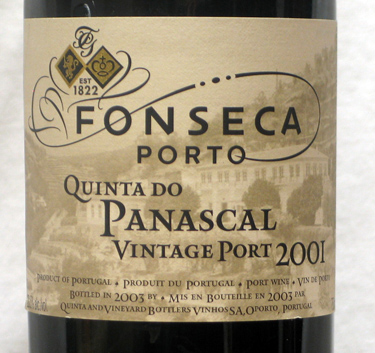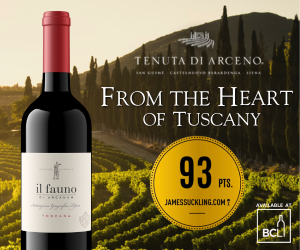The F-word, as in fortified wine, will be fully explored at the upcoming Vancouver Playhouse International Wine Festival and it can't come soon enough for wine drinkers.
Diversity has become a dirty word among most mainstream wine buyers who lean far too much toward obvious sales trends and spend precious little time ensuring their portfolios represent the true diversity of the wine world.
Let's face it, we really don't need another Chardonnay or cabernet sauvignon on store shelves, but we could certainly use some additions to the fortified wine category to better explore the eccentric side of wine. Enter the Playhouse Global theme, and the extremely versatile flavours of fortified wines.
The fortified wines you are likely to encounter at the festival will be unique and as organizers are saying the product of long traditions. The style of fortified wines, in essence a wine whose fermentation is arrested by the addition of alcohol, is fairly sweet and alcoholic. The mainstream versions are sold under sherry, port and Madeira monikers in the Old World, while here in the New World copycat versions are simply labelled fortified wine.
In Spain, the most famous fortified wine is sherry made from the palomino grape resulting in two primary styles: fino and oloroso. Finos are delicate and dry, with pungent minerality. Oloroso is a much more intense drink that is deliberately oxidized and can be dry or sweet.
In Portugal, port wine follows a similar path. The addition of brandy while the grape sugars are being converted to alcohol halts the fermentation process, resulting in a sweet wine, high in alcohol. After that, how it's aged -in wood or bottle -determines its station in the port world. From aged tawnies and late-bottled vintage port, styles can range all the way to single quinta (or farm) port to the great single vintage ports of the Douro capable of aging for decades.
Madeira is the other fortified Portuguese wine made in the Madeira Islands. The wine is produced in a variety of styles ranging from dry to sweet and is noted for its unique winemaking process, which involves heating the wine up to temperatures as high as 60 C and deliberately exposing the wine to some levels of oxidation.
Globally, any region that makes wine is also likely to fortify a small portion of its output, hence the worldwide selection at this year's festival. What follows are just a few of the many fortified wines coming to town next month. As always, the largest selection will be inside the International Tasting Room on Thursday, Friday and Saturday nights from 7 to 10 p.m.
Sandeman Ruby Porto N/V has a dark cherry colour and a rich chocolate, almond, coffee, cherry nose flecked with pepper, liquorice and black tea aromas. The style is drier but balanced with sweetness and acidity. The finish is warm with chocolate, tobacco, earthy, dried fig, balsamic and clove flavours.
Similarly rich, spicy liquorice, black tea, prune/plum aromas mark the nose of the Dow's Late Bottled Vintage Port 2005 from the Douro Valley in Portugal. Rich, full, warm and fresh on the palate, it has fine sugar and acid with some firm tannin. More chocolate, prune, liquorice, pepper, orange and plum jam flavours entice with bits of ginger and black tea flavours. There is plenty of structure to age, but you can drink it now. An excellent LBV.
Fonseca Quinta do Panascal 2001 is produced in those years when a general vintage declaration is not made. Look for spicy, menthol, dried plum nose with bits of black tea, dried fig and spicy, orange aromas. The palate is warm and full with fine sweetness and a spirity palate marked by espresso, hot black liquorice, black tea, fig and blackberry flavours. It has plenty of intensity that will require another five to seven years to fully mature.
Lustau East India Solera Sherry N/V has an attractive spicy, toffee, walnut, dried citrus-peel nose with chocolate, cedar, tobacco notes. On the palate, the flavours range from walnut, toffee and orange peel to cedar, tobacco and earthy, peppery chocolate notes that finish intense. Great with desserts or spicy food.
The Williams & Humbert Don Guido Pedro Ximenez Solera Especial N/V from Jerez, Spain is aged 20 years in oak barrels. Its dark cherry, amber colour gives way to a spicy, walnut, floral, nose with bits of cedar, soy and raisin aromas. The palate is rich, ripe, round, full and unctuous with raisiny, buttery, walnut, coffee, toffee, chestnut, tobacco, orange-peel flavours. A complex style dessert wine for cheese or pecan pie.
R.L. Buller & Son Fine Old Muscat is a non-vintage blend from Rutherglen, Victoria, Australia. The solera, or group of barrels, for this blend has been active for more than 20 years but the average age of the wine is more like six to 10 years. Again, expect a spicy, mineral, floral nose with mint, orange peel, tobacco, and pecan, cherry and apricot notes. Warm and rich, it has a big orange, cherry, fig flavour with spicy, minty, tobacco notes and a raisin aftertaste. An impressive fortified wine for the price.
Sandeman Ruby Porto N/V, Douro Valley, Portugal
Price: $21.50
UPC: 005601083001585
Score: 87/100
Remarks: Drier style but balanced sweetness and acidity with a fiery finish.
Dow's Late Bottled Vintage Port 2005, Douro Valley, Portugal
Price: $26
UPC: 05010867200159
Score: 91/100
Remarks: There is structure to age, but you can drink it now. Excellent LBV.
Fonseca Quinta do Panascal 2001, Douro Valley, Portugal
Price: $70
UPC: 05013521101571
Score: 92/100
Remarks: Rich warm and full with good sweetness but not cloying.
Lustau East India Solera Sherry N/V, Sherry Jerez, Spain
Price: $37
UPC: 0097985287007
Score: 90/100
Remarks: Sweet, walnut, toffee, orange peel, cedar and peppery flavours.
Williams & Humbert Don Guido Pedro Ximenez Solera Especial N/V, Jerez, Spain
Price: $26
UPC: 84100280046201
Score: 90/100
Remarks: Huge, raisiny, buttery, walnut, coffee, toffee and orange peel flavours.
R.L. Buller & Son Fine Old Muscat N/V, Rutherglen, Victoria, Australia
Price: $42 Everything Wine only
UPC: N/A
Score: 94/100

 quicksearch
quicksearch






